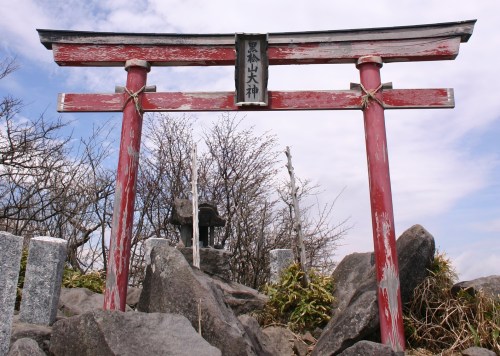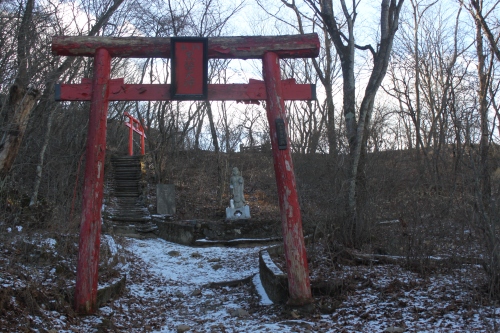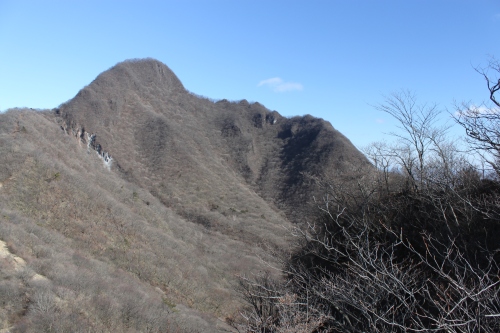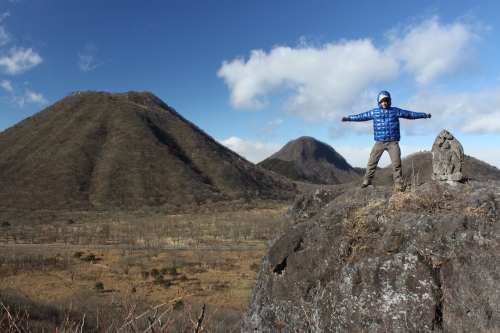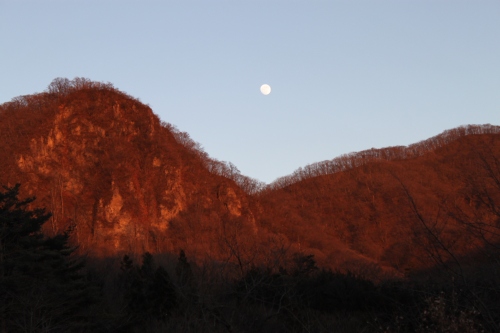In order to climb all of the Hyakumeizan, sometimes you have to resort to some physical hardships: financially devastating taxi rides, obscenely tight hiking times, sleepless nights on cramped buses, sleeping in dark corners of train stations. You get the picture. It took quite a lot of thinking before I finally came up with a feasible plan for tackling one of the most inaccessible of the Hundred peaks. A night bus from Osaka to Numata, the first bus to Fukuwari waterfall, followed by a 20km bicycle ride on the most rugged of forest roads. It all sounded so sweet on paper, so what could go wrong?

My plan was to depart on a Thursday night for a Friday afternoon assault. I’d made prior arrangements with my Aussie friend Joey to borrow his mountain bike. I called him on Monday evening to confirm a pick-up time, only to learn to my grave horror that his bike had been lifted just 2 days prior! Just my luck, since I’d already bought a bus ticket. I did some quick thinking. In the parking lot of my apartment building, there are a few abandoned bikes that have seen better days. I picked out a nice looking folding bike with flat tires and a rusty chain. It was completely unlocked, so I got out my pump and tested the tires. The next morning they were still completely inflated, which was the main test of worry. I spent a good half an hour cleaning off the thick network of cobwebs and spider webs, as well as giving it a good dusting and a quick test ride around the block. Everything seemed ok, so I called up my Canadian friend Krzysztof to borrow his bike bag and I was in business. This was truly turning into an International affair. Some of you may be wondering about the ethnics of stealing an abandoned bike, but let me clarify that I was planning to return the bicycle to its exact location exactly 2 days later, so I’d much rather use the term “borrowing”.

I walked up to the bus terminal just before the departure time, showed my ticket, and headed to the baggage loading area under the bus. “Actually, you’re not supposed to bring bikes on this bus”, warned the attendant, as he loaded the bike into the empty compartment. That’s one of the things I love about Japan! Was this guy really going to make me leave my bike at the bus terminal, or make me choose between the bus or the bike? I told him I didn’t know the rules, but with only 2 other passengers on the entire bus, it didn’t really make much difference anyway.

Since it was a weekday, the bus rolled into Numata station around 40 minutes earlier than originally scheduled, so I had time to eat some breakfast before boarding the one hour bus ride to the waterfall. The weather was perfect, as I could see Mt. Tanigawa rising in the distance, above the clouds. Mt. Akagi was also peeking its head out to say hello. I got off at the bus stop, unloaded the bag, and proceeded to unfold the bike. The man outside of the souvenir stall started quizzing me about my intentions. Instead of trying to dissuade me, he gave me a hearty “ganbare” and shoved a free can of pocari sweat into my hands! I strapped on my helmet and rode off into the sunset (well, at least up the steep hill to the start of the trailhead). I soon realized my first problem of the day: the gear shift was broken! Sure it was a 6-speed bike, but the bike only stayed in the highest gear. In order to ride in the lowest gears you had to hold the shifter in place. No wonder this bike was abandoned! Would I really be able to make it to the trailhead? I knew if I tried to ride the entire way, my legs would be like jelly and I’d be in no condition to go hiking! I resorted to a combination of riding and pushing the bike. Basically I’d ride on all the downhill and flat parts, and push the bike on the hillier/rockier bits. The bike just barely survived the 4-1/2 hour journey, as the chain kept popping off and various bike parts flew every which way. The only thing that saved me was the fact that the bike had rear shocks, so I couldn’t feel any of the bumps! By the time I arrived at the trailhead, it was already 11:30am, but I remember Julian’s previous advice: “Getting there is the toughest part of the hike”. Yep, the hardest part was behind me, but I was really starting to wonder how I’d get back to civilization before dusk. I ate a quick lunch, stowed unnecessary gear in the toilet hut, and started on my way.

It turns out that the bike ride was the perfect warm-up for my body, as I felt great hiking along the trail. There was a “Beware of Bears” sign at the entrance to the trail, which never scares me. In fact, it’s been one of my dreams to see a bear in Japan. Most of them are nocturnal and completely harmless, but given a notorious reputation by the Japanese media because they come down to town in Autumn to eat the farmers crops. Anyway, I noticed that it was only 3km to the summit of Mt. Sukai. I now know why this approach is so popular! If there’s one thing I’ve learned over the years, it’s that Japanese hikers are basically lazy. If given a choice of approaches, they almost always choose the shortest one, or the one with a gondola!

I flew up the short path, surprising myself by arriving at the ridge line in only 45 minutes! Sure the hike was ridiculously steep, but there were plenty of ropes and tree roots to grab onto along the way. I turned left for the short climb to the summit. The cloud was completely in, but for some odd reason it made the mountain extremely beautiful. Sometimes it’s nice to look at virgin forest and the color gradation against the white backdrop of cloud. I retreated back to the trail junction at the ridge line. It was here that I met the only other people of the day. A husband and wife team of hikers. They’d come up from the same path I’d taken, and were on their way to the summit. I told them about how I’d ridden my bicycle all the way along the forest road, and the gentleman responded with what must be my favorite Japanese phrase: “nosete ageru yo”, which translates “we’ll give you a ride”. I didn’t even ask, but here they were offering to save me another painful 20km ride on the road! “You’ll have to wait until we get off the mountain, though”, he added. “We should be back around 5pm.” This was the happiest I’ve felt in a long time, as I slowly and leisurely descended back the way I came. It was such a huge change from my hurried pace earlier. I must’ve spend about an hour sitting by the mountain stream, watching the water flow and reflecting on all my Hyakumeizan hikes: the hidden beauty of Japan, the kindness of the people, my extremely good timing. Sure enough, the couple returned at preciously 5pm and we headed to Hotaka kogen, where they were able to talk the owner into giving me an empty room and 2 meals for only 5000 yen!

The next day, I rode the bike back to the Fukuwari bus stop, left my bike at the police box for safe keeping (they never bothered to check if it was my bike or not), and spent some time sitting by the Niagara falls of Gunma Prefecture, so peaceful and absolutely deserted at 7 in the morning. I caught the bus to Jomon-Kogen station, and then the Shinkansen back to Osaka. I returned the bike to exactly the same place I’d found it, and marked Mt. Sukai off my ‘to climb’ list. I also have a daily reminder of my adventure every time I retrieve my bike.
Read Full Post »


